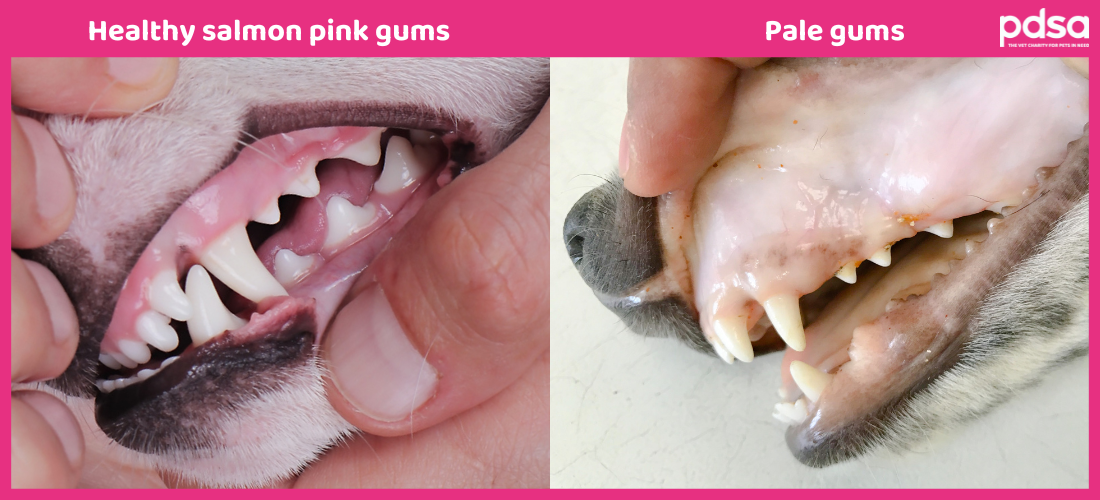Are My Dog’s Gums Pale?

Overview
- Your dog’s gums should be a salmon pink colour – anything else could signify a health problem.
- You can easily check your dog’s gums at home, and it’s helpful to do this regularly, so you know what’s normal for your dog, and can spot problems early.
- Never force your dog to have their gums checked, if they won’t let you don’t stress them out or risk getting bitten, ask your vet for advice instead.
 Video found at youtu.be/YqBJSLafS8w
Video found at youtu.be/YqBJSLafS8w
- Ask your dog to sit down or wait until they’re standing still
- Gently lift their lip*
- Find a pink section of gum to look at – this should be salmon pink in colour. It’s abnormal for gums to be light pink, white, bright red, or have a blue tinge
- Don’t worry if your dog has black or grey colouring on their gums, this is completely normal. However, if their whole mouth is pigmented, you may struggle to check their colour and need your vet to do it instead.
- Once you have finished checking their gums, reward your dog with a treat
*If your dog won’t let you, don’t stress them out and risk getting bitten, stop and ask your vet for advice.

Other things you can check
You can also check your dog’s gums for a few other things, including:
- Hydration: You can check if your dog is well hydrated by touching their gums. They should feel moist, and your finger should come away a bit damp. Dry and sticky gums can be a sign of dehydration.
- Circulation: This test, called ‘capillary refill time’, tells you how well your dog’s blood flows around their body. Gently press their gum, and you will see it turn white as blood is pushed out of the tiny blood vessels in the gums. Once you remove your finger, the white patch of gum should return to pink in under two seconds. Any longer could be a sign of poor circulation.
- Tooth and gum health: Use this time to check your dog’s gums and teeth.
When to contact your vet
- You should contact your vet straight away if your dog’s gums are any colour other than salmon pink, as this could be a sign of a health problem.
- If possible, take a photograph to send to your vet while you’re speaking to them – make sure it’s in focus and in good light.
Why are my dog’s gums pale?
- White gums can be a sign of severe anaemia, blood loss, shock, kidney disease, pain, or anxiety.
- Pale pink gums can indicate anaemia, low blood pressure, or shock.
- Yellow gums can signify liver problems or red blood cell damage.
- Blue or purple gums can be a sign of breathing problems, choking, heart disease, low temperature, or low blood pressure.
- Bright red gums can be a sign of heat stroke, high blood pressure, or poisoning.
- Muddy brown gums are rare but can be caused by paracetamol poisoning.
Published: October 2022
Did you find this page useful?
Tell us more
Please note, our vets and nurses are unable to respond to questions via this form. If you are concerned about your pet’s health, please contact your vet directly.
Thank you for your feedback
Want to hear more about PDSA and get pet care tips from our vet experts?
Sign up to our e-newsletter
Written by vets and vet nurses. This advice is for UK pets only. Illustrations by Samantha Elmhurst.
